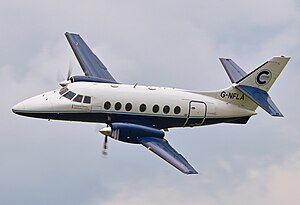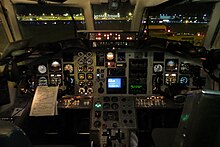Eastern Air Lines, also colloquially known as Eastern, was a major airline in the United States that operated from 1926 to 1991. Before its dissolution, it was headquartered at Miami International Airport in an unincorporated area of Miami-Dade County, Florida.
Northwest Airlink was the brand name of Northwest Airlines' regional airline service, which flew turboprop and regional jet aircraft from Northwest's domestic hubs in Minneapolis, Detroit, and Memphis. Service was primarily to small-to-medium-sized cities and towns where larger aircraft might not be economical to operate and also to larger markets to either provide additional capacity or more frequent flights than could be justified using mainline aircraft. Beginning in July 2009, the Northwest Airlink trade name was phased out, and replaced by the Delta Connection trade name for Delta Air Lines as part of the Delta/Northwest merger.
Continental Express was the operating brand name used by a number of independently owned regional airlines providing commuter airliner and regional jet feeder service under agreement with Continental Airlines. In 2012 at the time of Continental's merger with United Airlines, two carriers were operating using the Continental Express brand name:

The British Aerospace 146 is a short-haul and regional airliner that was manufactured in the United Kingdom by British Aerospace, later part of BAE Systems. Production ran from 1983 until 2001. Avro International Aerospace manufactured an improved version known as the Avro RJ. Production for the Avro RJ version began in 1992. Later on, a further-improved version with new engines, the Avro RJX, was announced in 1997, but only two prototypes and one production aircraft were built before production ceased in 2001. With 387 aircraft produced, the Avro RJ/BAe 146 is the most successful British civil jet airliner program.

The British Aerospace ATP is an airliner designed and produced by British Aerospace. It was an evolution of the Hawker Siddeley HS 748, a fairly successful feederliner of the 1960s.
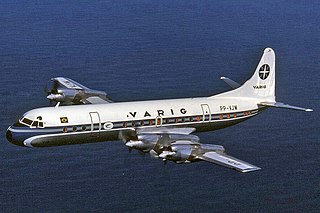
The Lockheed L-188 Electra is an American turboprop airliner built by Lockheed. First flown in 1957, it was the first large turboprop airliner built in the United States. Initial sales were good, but after two fatal crashes that led to expensive modifications to fix a design defect, no more were ordered. With its fairly high power-to-weight ratio, huge propellers and very short wings, large Fowler flaps which significantly increased effective wing area when extended, and four-engined design, the airplane had airfield performance capabilities unmatched by many jet transport aircraft even today—particularly on short runways and high field elevations. Jet airliners soon supplanted turboprops for many purposes, and many Electras were modified as freighters. Some Electras are still being used in various roles into the 21st century. The airframe was also used as the basis for the Lockheed P-3 Orion maritime patrol aircraft.
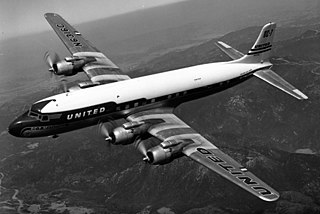
The Douglas DC-7 is an American transport aircraft built by the Douglas Aircraft Company from 1953 to 1958. A derivative of the DC-6, it was the last major piston engine-powered transport made by Douglas, being developed shortly after the earliest jet airliner—the de Havilland Comet—entered service and only a few years before the jet-powered Douglas DC-8 first flew in 1958. Unlike other aircraft in Douglas's line of propeller-driven aircraft, no examples remain in service in the present day, as compared to the far more successful DC-3 and DC-6.

The Handley Page HP.137 Jetstream is a small twin-turboprop airliner, with a pressurised fuselage. The aircraft was designed to meet the requirements of the United States commuter and regional airline market. The design was later improved and built by British Aerospace as the BAe Jetstream 31 and BAe Jetstream 32, featuring different turboprop engines.

The British Aerospace Jetstream 41 is a turboprop-powered feederliner and regional airliner, designed by British Aerospace as a stretched version of the popular Jetstream 31. Intended to compete directly with 30-seat aircraft like the Embraer Brasilia, Dornier 328 and Saab 340, the new design eventually accommodated 29 passengers in a two-by-one arrangement like the Jetstream 31. Eastern Airways of the UK is the biggest operator of Jetstream 41s in the world, with 14 in the fleet.

The Antonov An-28 is a twin-engined light turboprop transport aircraft, developed from the Antonov An-14M. It was the winner of a competition against the Beriev Be-30, for use by Aeroflot as a short-range airliner. It first flew in 1969. A total of 191 were built and 16 remain in airline service as at August 2015. After a short pre-production series built by Antonov, it was licence-built in Poland by PZL-Mielec. In 1993, PZL-Mielec developed its own improved variant, the PZL M28 Skytruck.
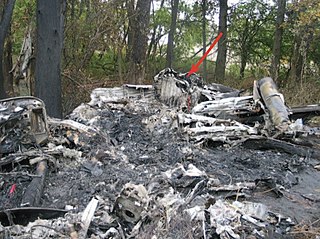
Corporate Airlines Flight 5966 was a scheduled passenger flight from St. Louis, Missouri to Kirksville, Missouri. On October 19, 2004, the Jetstream 32 aircraft operating the flight crashed on approach to Kirksville Regional Airport as a result of pilot error, killing 13 of the 15 people aboard.

The Embraer EMB 120 Brasilia is a twin-turboprop 30-passenger commuter airliner designed and manufactured by the Brazilian aircraft manufacturer Embraer.

The Beechcraft 1900 is a twin-engine turboprop regional airliner manufactured by Beechcraft. It is also used as a freight aircraft and corporate transport, and by several governmental and military organizations. With customers favoring larger regional jets, Raytheon ended production in October 2002.
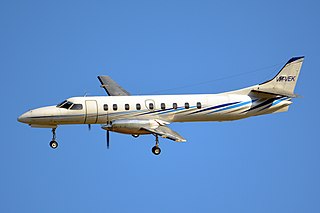
The Fairchild Swearingen Metroliner is a 19-seat, pressurized, twin-turboprop airliner first produced by Swearingen Aircraft and later by Fairchild Aircraft at a plant in San Antonio, Texas.

Air New Orleans was an airline based in Birmingham, Alabama that was conceived as a commuter air carrier to provide scheduled passenger service to cities throughout the Southeastern United States from Texas to Florida. The airline was founded in 1981 in Panama City, Florida and operated scheduled passenger service between 1981 and 1988.

In aviation, a preflight checklist is a list of tasks that should be performed by pilots and aircrew prior to takeoff. Its purpose is to improve flight safety by ensuring that no important tasks are forgotten. Failure to correctly conduct a preflight check using a checklist is a major contributing factor to aircraft accidents.

Northwest Airlink Flight 5719 was a flight from Minneapolis-Saint Paul International Airport to International Falls Airport in International Falls, Minnesota with a scheduled intermediate stop at Chisholm-Hibbing Airport in Hibbing, Minnesota. On December 1, 1993, the Jetstream 31, operated by Express Airlines I as Northwest Airlink, collided with a group of trees in a forest during final approach to Hibbing, and crashed into two ridges northwest of the airport, killing all sixteen passengers and the two pilots on board.

Links Air was a British airline selling and operating scheduled regional flights as well as charter services. It formerly operated scheduled flights out of Doncaster Sheffield Airport and public service obligation flights in Wales from Cardiff to Anglesey on behalf of the Welsh Government.

Flagship Airlines Flight 3379 was a scheduled flight under the American Eagle branding from Piedmont Triad International Airport to Raleigh–Durham International Airport during which a British Aerospace Jetstream crashed while executing a missed approach to the Raleigh–Durham International Airport on the evening of Tuesday, December 13, 1994. The two pilots and 13 passengers died in the crash; five passengers survived with serious injuries.
